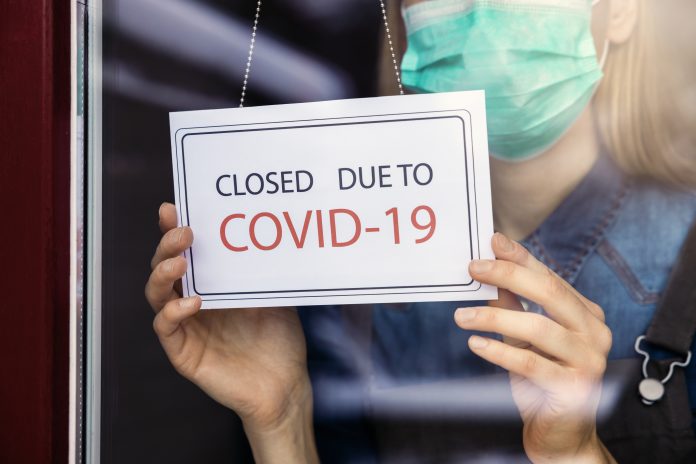Jade Brooks, an associate solicitor at Blaser Mills Law, responds to The Supreme Court’s ruling on coronavirus-related business interruption insurance claims and discusses what it means for policyholders – in this Q&A interview
What is the background to this case? How did it first come about?
“The situation relating to the coronavirus pandemic is unprecedented in recent history.
“Enforced lockdowns and widespread business closures have led many companies to claim under their business interruption insurance policies for the significant losses they have sustained.
“However, many insurance firms declined to provide payouts to claimants, arguing that polices were not designed to cover losses flowing from the pandemic.
“The Financial Conduct Authority [FCA] was concerned by the lack of clarity from insurers and the level of uncertainty for businesses when making such claims, and therefore decided to launch a test case.”
Why was the wording of many business interruption insurance policies so contentious when it came to businesses making coronavirus-related claims?
“The FCA’s test case was based on a representative sample of policy wording from a number of insurers, covering a range of clauses such as ‘disease’ clauses and ‘prevention of access’ clauses.
“The issue was the interpretation of policy wording and the basis upon which the legal test of causation was to be assessed and applied.
“Generally, insurers involved in the case sought to give the policy wording narrow definitions, whereas the FCA sought to put forward a much broader interpretation of the policies.
“In some cases, the question of whether a business could successfully claim under its business interruption policy hinged on the specific interpretation of key words and phrases such as ‘event’, ‘occurrence’, ‘incident’, ‘closure’ and ‘prevent of access’.”
What impact was insurers rejecting claims having on businesses? Why did the FCA deem this to be such a cause for concern?
“As a result of the divergence in interpretations of policies between insurers and the FCA, there were two main impacts on businesses. Firstly, many claims were simply being rejected by insurers, prolonging the economic hardship that companies were experiencing.
“Secondly, where claims were accepted, there were discrepancies regarding the assessment of losses, with many claims being reduced due to insurers’ applications of ‘trend’ clauses and the impacts of COVID-19 in assessing quantum – the amount of damages that are awarded to a successful party in a claim.
“Overall, this was placing significant financial strain on many businesses, and there was widespread uncertainty across the board, including in areas of hospitality, retail, construction, and professional services, with the potential for businesses to collapse and further implications for the economy.
“The FCA commenced the test case because it believed it was in the public interest to do so, recognising that if each specific question of interpretation was to be brought by individual businesses, there would not be any certainty for a significant time, and any certainty would be dependent on businesses taking legal action when they had already suffered financial loss.”
What was the case’s journey to the Supreme Court? Why was it deemed that it should reach the Supreme Court?
“The first instance judgment was handed down by the High Court on 15th September 2020, with the FCA and a number of the insurers involved in the decision seeking permission to appeal.
“These appeals were ‘leapfrogged’ to the Supreme Court by cutting out the Court of Appeal, which was deemed necessary given the need for urgent and definitive clarification and guidance in this area.”
How and why did the Supreme Court reach its decision?
“The Supreme Court’s decision is limited to the issues that were appealed by insurers and the FCA.
- The Supreme Court provided guidance on the interpretation of disease clauses and took a narrower approach than the High Court in assessing the ‘trigger’ – an event that must occur in order for a liability policy to apply to a loss – in these clauses, seeking to preserve ‘radius limitations’.
However, its wider interpretation of causation meant that it found there was cover for the pandemic under all of the disease clauses considered in the case.
- The Court also considered the interpretation of prevention of access clauses and took a wider approach than the High Court, keen to ensure that socially- responsible policy holders would not be penalised.
The Court was clear that ‘interruption’ should be read in its natural and ordinary meaning and stated that it did not require a complete cessation of business.
The prevention of access to part of a premises or interruption to a part of a business could be sufficient to trigger the clause.
This is particularly significant, for example, for restaurants providing takeaway services.
- The test to be applied to the causal link that must be shown between a business’ insured losses and an insured peril was also considered.
The ‘but for test’ – which is commonly used to determine actual causation – was rejected as it would have, in many instances, undermined the commercial and underlying purpose of the insurance contract.
The Supreme Court instead favoured and developed the concept of ‘proximate cause’.
- ‘Trend clauses’ were considered and it was noted that the impact of the pandemic should not be taken into account when quantifying losses.
The Supreme Court observed that losses should be assessed by comparing the pre-coronavirus position with the post-coronavirus position.
- The Court took a similar approach regarding pre-trigger losses.
If there was a downturn in business due to the pandemic prior to the trigger event, this should not be taken into account in calculating the indemnity payable.
The effects of the pandemic should not be taken into consideration in the quantification process.
- The case of Orient Express Hotels Ltd v Assicurazioni General Spa [2010] EWHC 1186 (Comm) was also overruled.
This has been an important case in the insurance industry ever since it was decided in 2010, and has been regularly relied on since then.
This causes wider implications for the insurance industry, outside of the scope of business interruption insurance claims, when considering trends clauses and causation.”
How significant is this ruling for businesses that have been disrupted by the pandemic?
“This ruling is particularly significant because it provides a much wider scope for claims to be successfully made by businesses under business interruption insurance policies, and a degree of certainty for businesses and insurers alike on key issues of interpretation, especially in relation to coverage entitlement.
“However, there are still issues yet to be resolved – primarily relating to the calculation of loss.
“For example, on the issue of trends, it is the FCA’s guidance that payments made to businesses through the various government schemes, such as furlough, should not be treated as turnover. These payments are subject to the terms of a separate scheme and it shouldn’t be that an insurer benefits from this.
“However, there is not binding authority on this and this will, I suspect, be dealt with by the Courts in time.”
What impact is this likely to have on the insurance industry?
“Although insurers cannot retrospectively seek to change insurance policies, it is likely that there will be a move across the industry to narrow policy wording going forward, taking account of the Supreme Court’s judgment.”
Is there a danger that businesses might now exploit the Supreme Court’s decision?
“The Supreme Court’s ruling does not give businesses a ‘free pass’ to make a claim via their insurers. It will still be necessary for each claim and its set of facts to be considered against the specific policy wording to ascertain whether there is coverage entitlement.
“Businesses are still required to provide and evidence the losses that they are claiming for.”
Why is this ruling so significant in legal circles? How might it influence future business interruption insurance cases?
“The judgment of the Supreme Court binds all lower Courts and is the highest instance judgment that is possible in England and Wales.
“Its assessment in the ruling will affect all business interruption insurance cases that deal with similar issues in the future, and I expect the judgment to be relied on, at length, in future cases.”
What should businesses planning on bringing a business interruption claim following the ruling know before doing so?
“The position is complex, and while the judgment of the Supreme Court is hugely beneficial to policy holders generally, each case will turn on its own facts.
“I would urge all businesses to seek legal advice before pursuing a claim to ensure that their position is best protected.”











